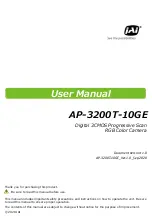
This is the general measurement formula used in all the FLIR Systems thermographic
equipment. The voltages of the formula are:
Figure 21.2 Voltages
Calculated camera output voltage for a blackbody of temperature
T
obj
i.e. a voltage that can be directly converted into true requested
object temperature.
U
obj
Measured camera output voltage for the actual case.
U
tot
Theoretical camera output voltage for a blackbody of temperature
T
refl
according to the calibration.
U
refl
Theoretical camera output voltage for a blackbody of temperature
T
atm
according to the calibration.
U
atm
The operator has to supply a number of parameter values for the calculation:
■
the object emittance
ε
,
■
the relative humidity,
■
T
atm
■
object distance (
D
obj
)
■
the (effective) temperature of the object surroundings, or the reflected ambient
temperature
T
refl
, and
■
the temperature of the atmosphere
T
atm
This task could sometimes be a heavy burden for the operator since there are normally
no easy ways to find accurate values of emittance and atmospheric transmittance for
the actual case. The two temperatures are normally less of a problem provided the
surroundings do not contain large and intense radiation sources.
A natural question in this connection is: How important is it to know the right values
of these parameters? It could though be of interest to get a feeling for this problem
already here by looking into some different measurement cases and compare the
relative magnitudes of the three radiation terms. This will give indications about when
it is important to use correct values of which parameters.
The figures below illustrates the relative magnitudes of the three radiation contributions
for three different object temperatures, two emittances, and two spectral ranges: SW
and LW. Remaining parameters have the following fixed values:
■
τ
= 0.88
■
T
refl
= +20°C (+68°F)
■
T
atm
= +20°C (+68°F)
80
Publ. No. T559733_en-US Rev. a571 – ENGLISH (EN) – November 4, 2011
21 – The measurement formula




































